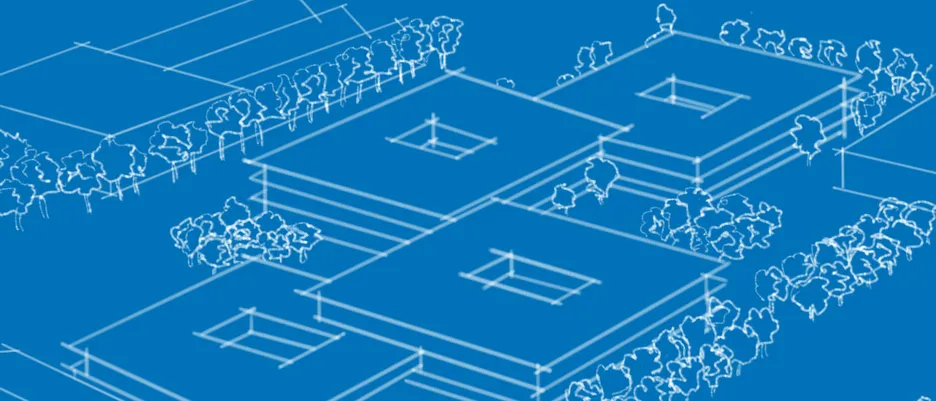
User-centric, decentralized and simple MCR and HVAC
Actual energy efficiency in operation through a new approach to MCR/HVAC and robust optimization to reduce the performance gap
Current approaches to the implementation of ambitious energy efficiency targets for buildings can largely be considered a failure. The increasingly complex building technology for the optimization of energy efficiency and the use of renewable energies only works, if at all, with a greatly increased use of personnel and thus costs in all phases from planning to commissioning and monitoring to operation. In the majority of buildings, however, the actual energy consumption during operation is far higher than the calculated demand values from planning (performance gap). One of the causes can be identified as the highly complex and therefore often error-prone building and especially control technology.
In addition, complex building technology requires a lot of space and a large amount of gray energy, and has a comparatively short service life with high investment, operating and maintenance costs. In addition, it has been shown that this does not automatically ensure a high level of user satisfaction, but conversely, a highly engineered room air conditioning system may even have disadvantages in terms of user comfort compared to simple and passive approaches (e.g. natural VS mechanical ventilation).
Furthermore, the current Covid 19 pandemic has brought the relevance of fresh air supply in enclosed spaces as well as hygienic and infection control aspects of ventilation systems back into focus. This will change the future requirements for ventilation concepts of non-residential buildings and their control, which in turn will bring more complexity and therefore susceptibility to errors.
Therefore, the classical approach must be fundamentally questioned and urgently replaced by new, alternative approaches in order to close the gap between planned and actual energy efficiency and thereby take an important step towards climate protection goals in the building sector. Building on findings from a previous project, the approach of a user-oriented, decentralized and simple MCR (measurement and control technology) and HVAC (technical building equipment) is being developed as part of this project.
The central component is the decentralization of the logical units of the MCR, which can simultaneously communicate and interact with each other and in the overall system via open interfaces. This is also accompanied by a reorientation of the HVAC with likewise decentralized building blocks, whereby it can be more strongly oriented to actual, current user requirements and in part simplified.
This achieves an interoperability and thus flexibility - in contrast to centralized and self-contained systems - which takes into account the short service life and rapid technological developments. At the same time, the user and his needs are brought back into focus and the operation of the MCR and HVAC is simplified, which should reduce the susceptibility to errors and enable real energy efficiency in operation.
Based on this new approach to MCR and HVAC, robust optimization will be performed to achieve the following goals:
- Reduction of the performance gap
- Optimized user satisfaction
- Extended service life
Thus, this project will first theoretically develop and optimize a concept for a robust and thus actually energy-efficient building operation based on a user-oriented, decentralized and simple MCR and HVAC. Close and early involvement in the integral planning of the Aschheim school campus means that conceptual approaches can be incorporated into the planning in the form of a model project and then implemented in the construction phase and later tested and thus validated during operation by means of monitoring. At the same time, the complexity of the ambitious building project allows for excellent transferability to non-residential buildings with a wide variety of uses.